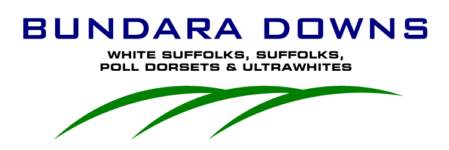MAIN POINTS
- Successful Merino stud diversifies into lamb production while maintaining their large Merino genetic pool
- Stronger Merino ewes joined to terminal sires
- Initial lambing and finishing problems were overcome with genetic selection
- The move has resulted in sustainability and profitability
- Consistency and earlier finishing has resulted from using Bundara Downs rams
- Lambs can be turned off 6 to 8 weeks earlier than most in the district
- Lambs weigh 51 to 53 kgs at 16 to 17 weeks and yield 49 to 50%
- As a group, Bundara Downs rams produce lambs that make more money
Over four decades of successful Merino stud breeding provided an excellent platform for diversification into prime lamb production for the Fiebig family of Hilton Heath Merinos, now at Keith in South Australia’s south-east.
The Hilton Heath Merino stud was founded at Mt Pleasant in the Adelaide foothills in 1969 and a Poll Merino stud was registered in 1981. These medium wool studs are still thriving with major successes at Adelaide Royal and Bendigo (formerly Melbourne).
A Hilton Heath fleece was named the ‘Best Wool in the World’ at the World Merino Conference in Tasmania in 1988 and in New Zealand four years later, a Hilton Heath fleece was runner-up for that prestigious award.
A move to the productive south-east 12 years ago enabled diversification into prime lamb production. To-day 1400 Merino ewes are joined to Merinos while 1000 of the stronger Merino ewes are joined to Poll Dorsets and White Suffolks. This means a large genetic pool of Merinos is maintained.
But the move into prime lamb production wasn’t easy at first with big shoulders, big necks and slow finishing impeding progress.
“This created management problems and we had to put a lot of work into finishing the lambs,” said Matt Fiebig.
A trip to Adelaide Royal changed this when the Fiebigs saw groups of rams that appealed to them.
“They were the Funke’s Bundara Downs rams or were rams that carried Bundara Downs genetics”, said Matt who was impressed by the consistency the genetics produced time after time.
“So we went to the Bundara Downs sale and identified rams that appealed to us visually and had the figures to suit our program.
“This was a move that has made management easier and has boosted production and profitability.
“We weigh every lamb and we discovered the Bundara Downs progeny matured earlier, yielded a lot better and weighed like lead,” he said.
“The clover, rye grass and natural grasses plus the fast growing Bundara Downs genetics mean we can get our first draft of lambs off six to eight weeks younger than most in the district.
“Our lambs are weighing 51 to 53 kgs at 16 to 17 weeks and yielding 49 to 50% with carcase weights in the 23 to 24 kg range sold over the hooks, mainly to JBS.
“We moved into prime lamb production as a way of keeping our options open because our country is suited to it and we needed to take some hard business decisions to make our operation sustainable”, said Matt.
The Fiebigs started off using Poll Dorsets but as White Suffolks improved, they now buy rams of both breeds from Bundara Downs. The White Suffolks are used over maiden ewes and they’ve never had to pull a lamb according to Matt Fiebig.
The Merino ewes that go to the terminal rams are too strong ( 22 to 22.5 micron) or too wrinkly to keep a ram lamb from.
“We look for a well shaped ram with the good butt shape and length and we also look for rams that are positive for fat cover for use over the straight Merinos - therefore we are often interested in a slightly different rams to those producers who are using first cross ewes,” he said.
That works in the Fiebigs’ favour as there is less competition for the rams that suit their operation.
The sandy soils at Keith also mean rams need good feet and legs.
“We usually need eight to 10 rams a year so we usually pick out 25 rams and rank them on figures and then physically inspect them and are most often able to buy the rams we need from among our top selections”.
“Bundara Downs rams suit our purpose perfectly. They breed consistently, are above breed average in the important traits, and as a group make us more money,” says Matt Fiebig.

Lambs by Bundara Downs rams out of medium wool Merino ewes at the Hilton Heath Merino stud at Keith, SA.

A medium wool Merino ewe with a Bundara Downs sired lamb at Hilton Heath where Bundara Downs genetics have been utilised to generate fast growth, quality carcases and add options to assist profitability while retaining Hilton Heath's award winning Merino genetics.

Matt Fiebig of Hilton Heath Merinos, Keith, SA, with some championship winning Merinos. Hilton Heath utilises Bundara Downs White Suffolk and Poll Dorset rams to add a profitable option to their operation.
